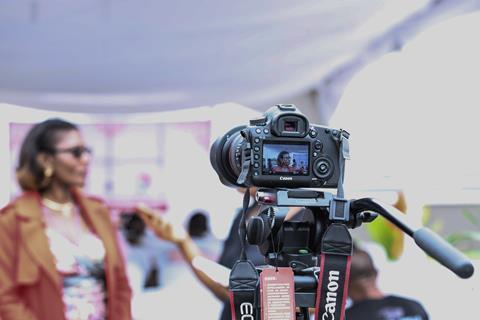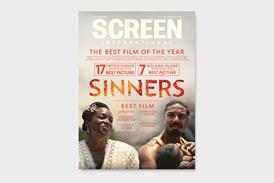
Content creators should consider the format of advertising-based video on demand (AVoD) when creating film and TV for the fast-rising viewing experience, an AFM panel heard on Wednesday (November 3).
“Filmmakers have a vision of what they want and I tell them they have to think about what audience they’re speaking to,” said Brian Stevenson, CEO and founder of Sheena Mae Stories. “I tell them to watch what [target channels and platforms] have on there, because that’s ultimately what they’re going to buy.”
Jennifer Vaux, head of content acquisitions at The Roku Channel which earlier this year acquired the Quibi library, added: “You don’t want the tail to wag the dog in the sense that you want the best natural story and an entertaining, fun experience.
“We have [former Quibi titles] Most Dangerous Game, #FreeRayshawn and Murder House Flip that end each five-minute, seven-minute chapter on a cliffhanger and it really brings you into the next chapter after an ad break… One of the things that we do when we work with distributors and we ingest their libraries we put the ad breaks it in natural scene breaks so you won’t just have an ad appear in the middle of a scene.”
The wide-ranging panel discussion, called How Streamers Approach Independent Content, also heard from IFC Films manager of acquisitions Adam Koehler on whether he thinks of a streaming audience when he acquires films. IFC Films releases tend to reach streaming stablemate IFC Films Unlimited two years after their initial release and Koehler is looking for content that stands the test of time and remains buzzy during its theatrical and pay-1 window run.
“Very often, we’ll come across a title that we feel will do spectacular on VoD but maybe not have theatrical life and it goes the other way,” he said. “A foreign language drama doesn’t really play quite as well on a VoD platform as much as it does in theatres. An action film is potentially more of a VoD title for us. So it really just comes down to the nature and the genre of the film.”
Koehler also spoke to cinema-going hesitancy, which is particularly pronounced among older audiences who have fewer films to watch because of the production shutdowns during the early stages of the pandemic.
“Right now we’re working through a lot of spectacular films that have been held back because the pandemic, so a lot of the focus is on some of these really big titles. Maybe a few months from now things will level out a little bit again.”
Asked about the pros and cons of virtual markets and festivals Vaux echoed the sentiments of almost everyone in the film industry when she said she missed the in-person nature of events. However she added, “One thing that’s been awesome about just the structure of having virtual festivals is younger folks on my team who have not been able to traditionally go to a festival have seen so many more movies and so I’m able to acquire more and have more engaging conversations with filmmakers.”
Koehler noted how virtual events levelled the playing field. “There’s a barrier to participate in Sundance. It’s very expensive, it’s not exactly an easy place to get to, it’s tough for beginner filmmakers and smaller press members to get that access, which has now been provided because of the pandemic. So, moving forward, I think we’re going to see more hybrid models that allows more people to participate in different ways.”























No comments yet